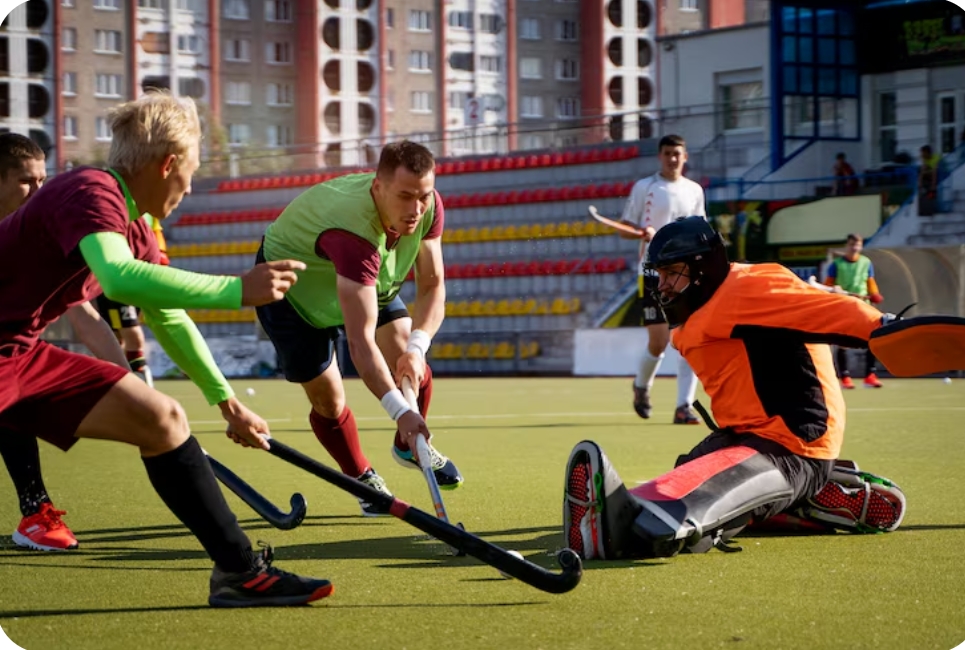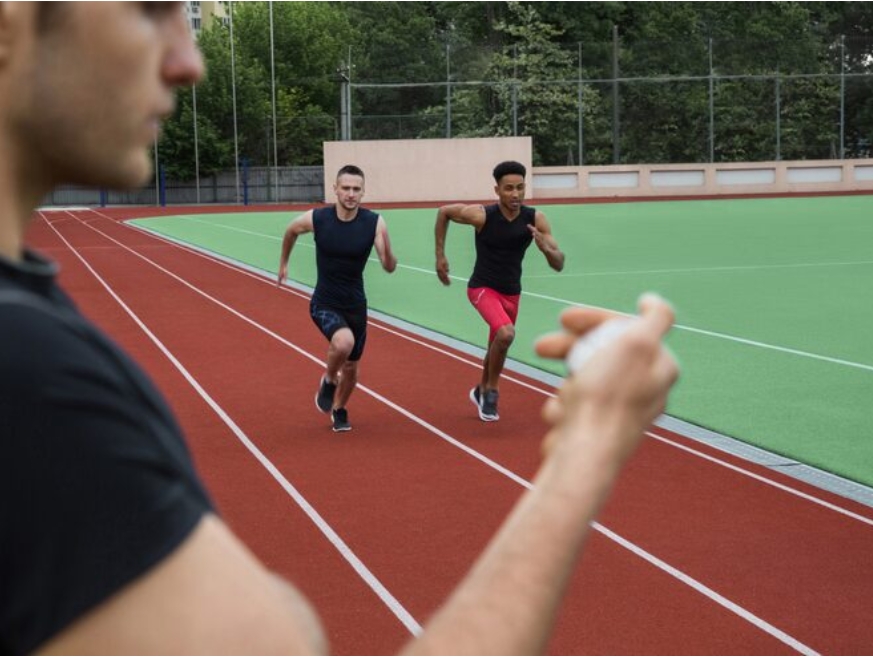Field Hockey Goalie Off-Season Lifting Program: Building Strength for the Next Season

As a field hockey goalie, the off-season is just as important as the playing season. It’s the perfect time to build strength, improve agility, and enhance overall performance. A field hockey goalie off-season lifting program focuses on strengthening the body, preventing injuries, and developing power and endurance, all crucial for a successful season ahead. In this article, we’ll explore how a dedicated off-season lifting program can improve a goalie’s performance and provide some key exercises that should be included in any off-season training regimen.
Why is an Off-Season Lifting Program Important for Field Hockey Goalies?
Field hockey goalies are some of the most physically demanding positions in sports. They are required to move quickly across the goal, dive, crouch, and react to fast-moving balls, all while maintaining balance and stability. To perform at their best, goalies need to develop strong muscles, improve flexibility, and maintain peak physical condition. An off-season lifting program is essential because it helps to:
- Build strength in key muscle groups such as the legs, core, and upper body.
- Enhance agility and explosive power, allowing for faster reflexes and better reactions during the game.
- Prevent injuries by strengthening muscles and joints, especially those prone to strain, such as the knees, hips, and shoulders.
- Maintain fitness during the off-season to avoid losing conditioning when the regular season begins.
With a structured lifting program, field hockey goalies can target their weaknesses, refine their movements, and return to the field stronger and more resilient.
Key Focus Areas for a Field Hockey Goalie Off-Season Lifting Program
A well-rounded off-season program should focus on several important areas: strength, power, agility, and injury prevention. These elements combine to create an athlete who is not only physically strong but also flexible and quick on their feet. Here’s a breakdown of the key components:
1. Lower Body Strength and Stability
Field hockey goalies spend a significant amount of time in a crouching position and need strong legs and hips for lateral movements, quick direction changes, and explosive dives. Lower body strength is essential for stability and reaction time. Incorporate these exercises to build leg strength:
- Squats (Bodyweight or Weighted) – Squats are fundamental for building strength in the quads, hamstrings, and glutes.
- Lunges – Lunges help improve balance and strength, making them ideal for developing lower-body stability.
- Deadlifts – This exercise targets the glutes, hamstrings, and lower back, all key muscles for goalies who need power and endurance in their legs.
These exercises help improve leg strength and stability, which are crucial for maintaining a low, strong position during gameplay and making those critical, explosive movements.
2. Core Strength
A strong core is essential for goalies because it helps with balance, stability, and the ability to quickly react to incoming shots. The core also plays a huge role in maintaining proper form when diving or reaching for the ball. Here are a few key exercises for core strength:
- Planks – Whether they are side or front planks, these are essential for building a solid core.
- Russian Twists – This rotational movement targets the obliques, helping goalies with their lateral and twisting movements.
- Medicine Ball Slams – A dynamic movement that works the entire core and helps improve explosiveness.
Incorporating these core exercises into your routine can significantly improve your overall stability and agility, which is crucial for those quick lateral movements that are common in field hockey.
3. Upper Body Strength and Endurance
While field hockey goalies are primarily focused on their lower body and core, upper body strength is also vital for blocking shots, throwing the ball, and maintaining proper posture in the goal. Key exercises to focus on include:
- Push-ups – A great bodyweight exercise that helps build strength in the chest, shoulders, and triceps.
- Pull-ups or Lat Pulldowns – These exercises build the back and shoulders, which help goalies with overhead motions and general upper body stability.
- Shoulder Presses – Focus on strengthening the deltoids and improving shoulder stability to prevent injury.
Upper body strength allows goalies to confidently make saves, especially when extending their reach or lifting their stick in an overhead position to block high shots.
4. Agility and Plyometric Training
For a goalie, agility is everything. They need to be able to move quickly from side to side and react fast to shots on goal. Incorporating plyometric exercises into the off-season lifting program will help improve explosive power, which is critical for rapid movement. Some exercises to consider include:
- Box Jumps – A great way to build explosive leg power.
- Lateral Skater Jumps – These simulate the side-to-side movements common in field hockey.
- Bounding – Bounding exercises help improve stride length and explosive power.
These movements mimic the explosive movements that goalies make during a match, helping them react faster and more efficiently.
5. Flexibility and Mobility
A common oversight in training is the importance of flexibility. Field hockey goalies often perform fast, dynamic movements that place significant strain on the muscles and joints. Regular stretching and mobility exercises can prevent injury and help with quick, fluid movements. Incorporating dynamic stretching before workouts and static stretching after workouts is vital.
Some effective flexibility and mobility exercises include:
- Hip Flexor Stretches – Important for mobility during dives and lateral movements.
- Hamstring Stretching – Helps prevent muscle tightness and improves range of motion.
- Shoulder Stretches – Especially important for goalies who frequently extend their arms to block shots.
Creating Your Field Hockey Goalie Off-Season Lifting Program
A structured lifting program should combine the exercises listed above. Aim to include strength training, agility drills, and flexibility exercises in your weekly routine. The ideal frequency for off-season training would be 3-4 sessions per week, allowing adequate rest for recovery. Additionally, cross-training with other activities like swimming, biking, or running can improve cardiovascular fitness and overall stamina.
For a detailed lifting program tailored to a goalie’s needs, visit Stack.com for expert advice on strength training and conditioning or Active.com for workout routines.
Conclusion
The field hockey goalie off-season lifting program is critical to building a strong, agile, and injury-resistant athlete. By focusing on lower body strength, core stability, upper body endurance, agility, and flexibility, goalies can significantly improve their performance on the field. With consistent training, dedication, and the right exercises, goalies will return to the next season stronger and ready to take on any challenge that comes their way.

